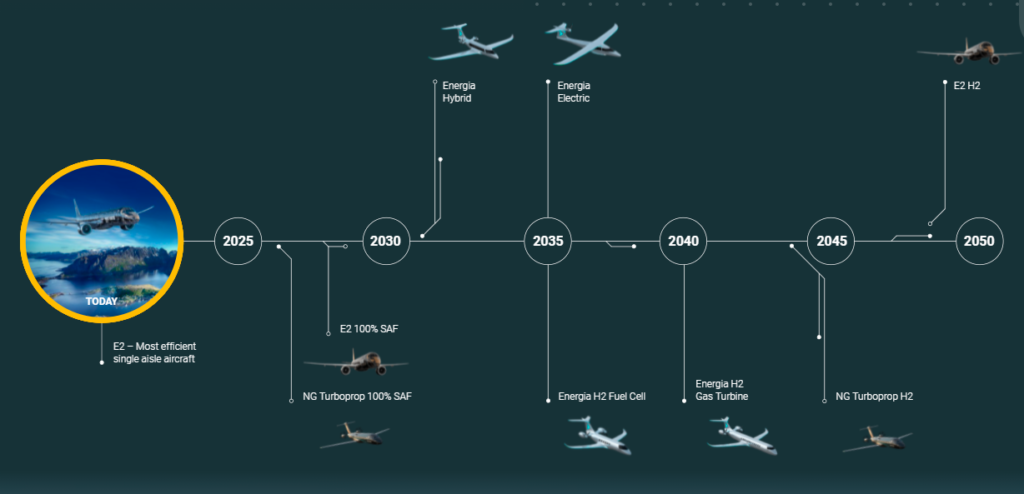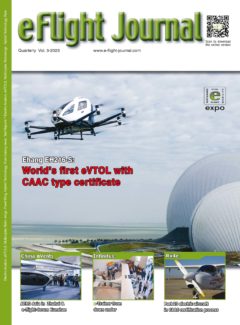On November 8 Embraer held a grand conference on sustainable aviation development planning. The President and CEO of Embraer Commercial Aircraft announced Embraer’s sustainable aviation plan and unveiled four matching aircraft design concepts.The overall goal is to achieve carbon neutrality by 2025.
According to Embraer’s plan, in 2030 all models produced by Embraer can use sustainable aviation fuel (SAF) reducing carbon emissions by 25% and helping the global transportation aviation industry to achieve full net zero carbon emissions by 2050.

To this end, Embraer plans to take a two-step technological development path: First, in the short to medium term, sustainable aviation fuel (SAF) is the main development goal to use existing infrastructure and aircraft engines and avilable technology as much as possible. The long-term plan is to take hydrogen as the aviation fuel.
Accordingly Embraer tested the full-electric demonstrator this year, and plan to test the hydrogen fuel cell demonstrator in 2025, to fly the eVTOL prototype in 2026, and by 2030 Embraer plan to have existing models to be fully compatible with 100% SAF and plan to launch new turboprop models that are fully compatible with SAF. The new hydrogen turboprop model will be tested in 2045, and the new hydrogen line of aircraft will be launched in 2050.
Embraer has cooperated with Orlando Airport in the United States to build SAF supply facilities, and cooperated with a number of SAF companies to develop and industrialize SAF, and cooperated with engine supplier Pratt & Whitney to make the existing engines compatible with SAF.
Embraer believes that Embraer’s advantage over electric aviation startups is its mature and systematic research and development capabilities, and that its advantage over other OEMs is its cost structure and relatively more flexible corporate structure, especially in turboprop area.
Embraer will not only pay attention to urban air mobility (UAM) and eVTOL, but also will attache great importance to the development of regional air mobility (RAM). Embraer believe that RAM can make full use of the existing infrastructure, and the new aircraft models developed by Embraer will be suitable for RAM use case.

Range – 500 nm
Seats – 9 pax
Noise – 60% lower External Noise

Technology Readiness – 2035
Range – 200 nm
Seats – 9 pax
Emissions – Zero CO2
Noise – 80% lower External Noise

Technology Readiness – 2035
Range – 200nm
Seats – 19 pax
Emissions – Zero CO2
Noise – 70% lower External Noise

Technology Readiness – 2040
Range – 350 – 500nm
Seats – 35-50 pax
Emissions – Zero CO2
Noise – 60% lower External Noise
